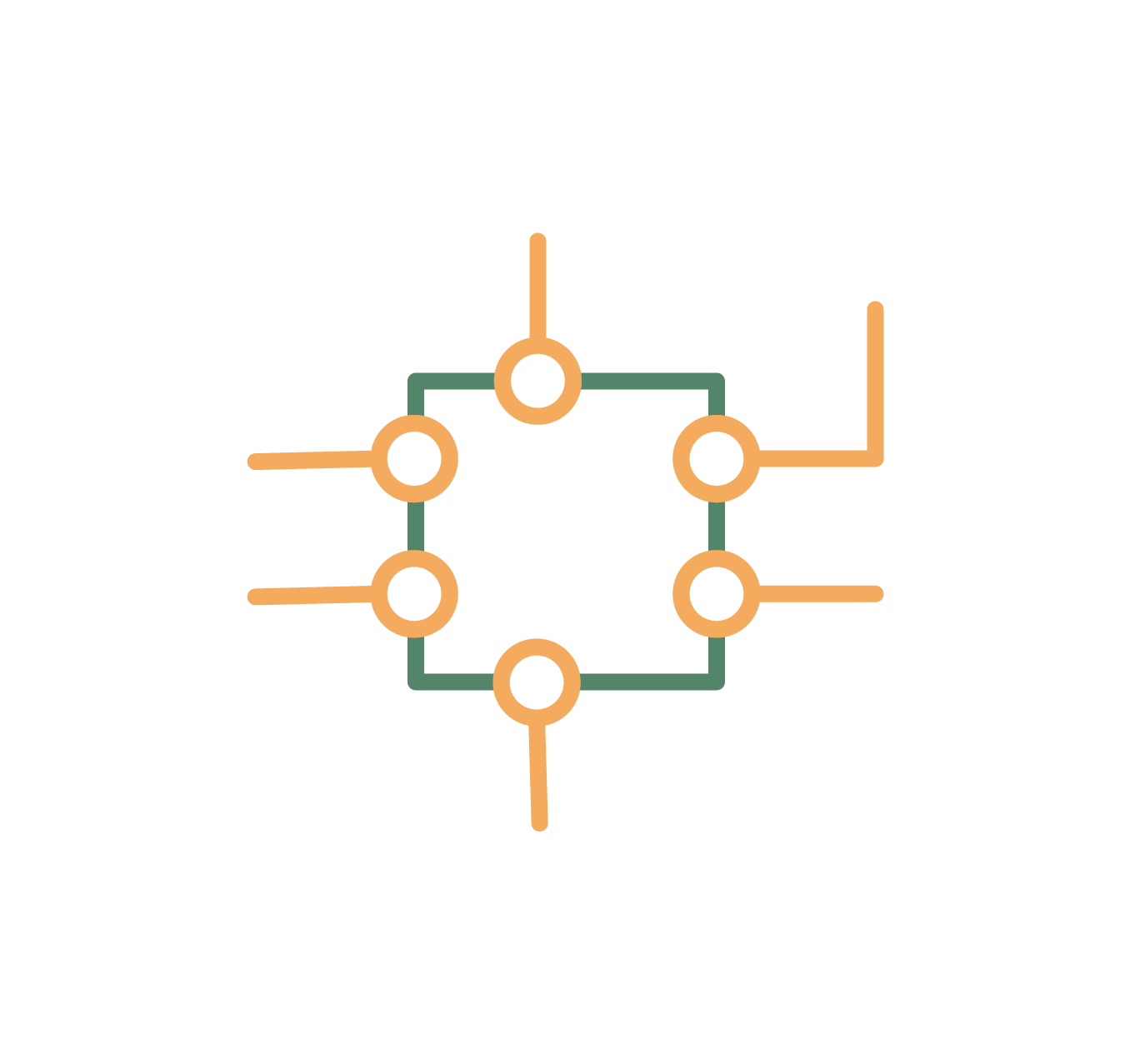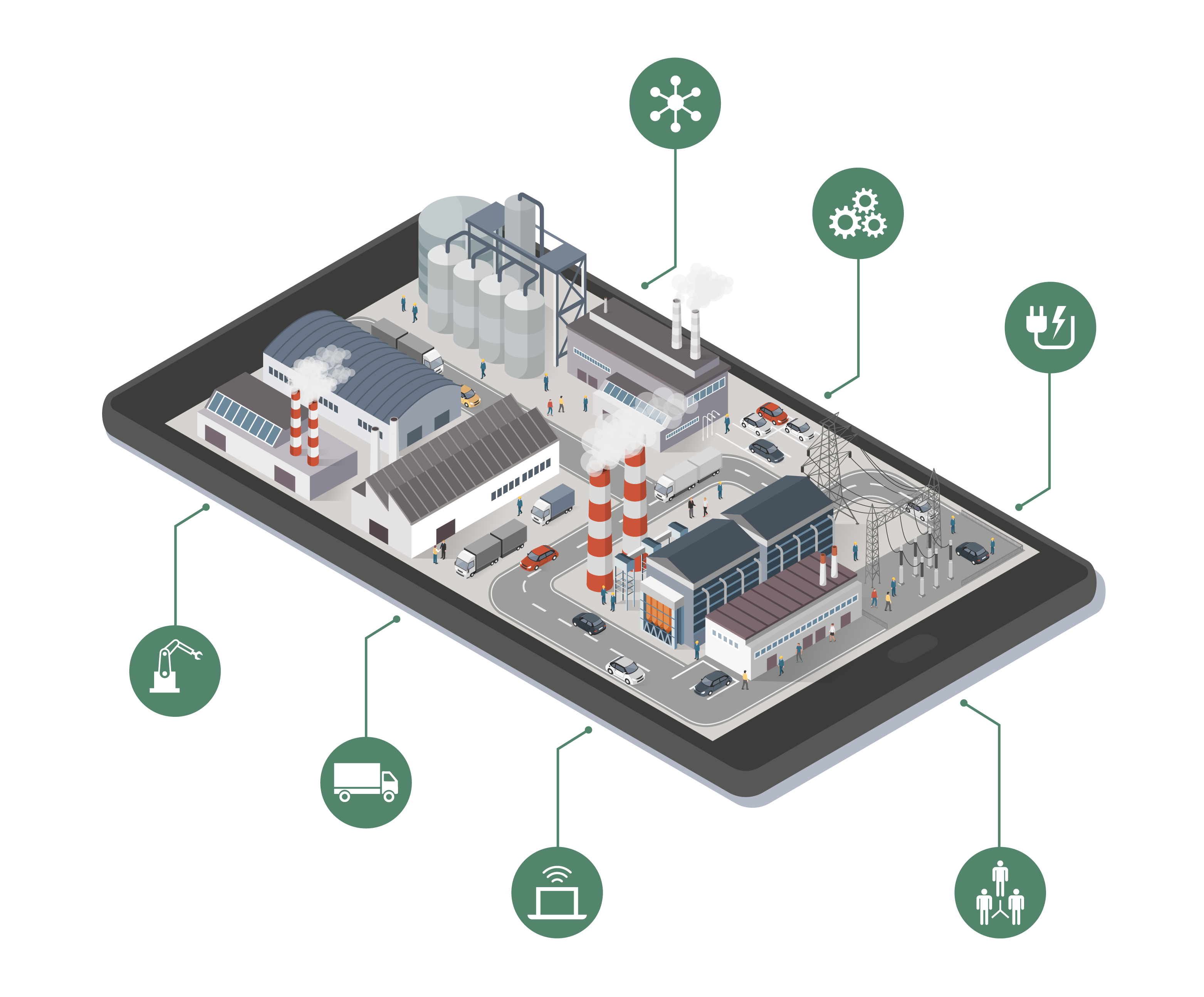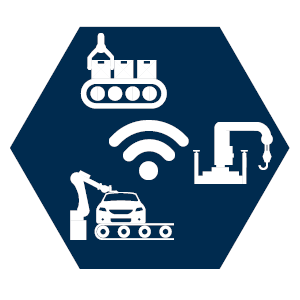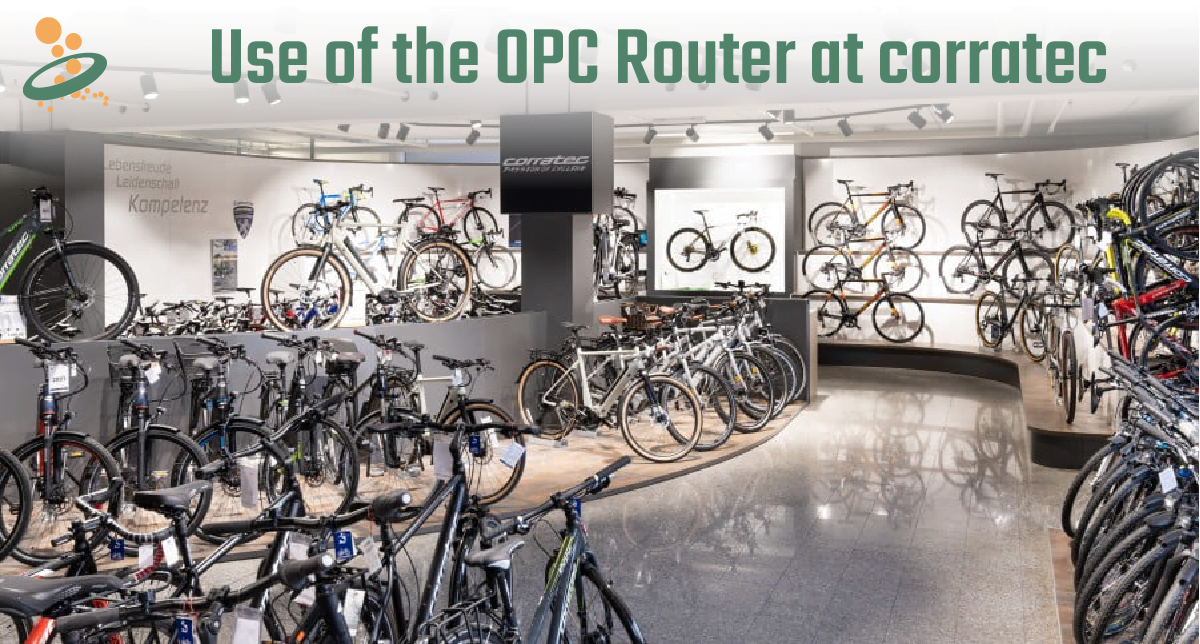Interfaces – The gateway to a networked world
Interfaces play a crucial role in today’s networked world. They serve as a connection point between different systems and applications, enabling the exchange of data and information. In industry, interfaces are ubiquitous and ensure seamless integration of systems and applications. Read all about interfaces and their use in industry in this article.

Table of contents
1. What is an interface?
An interface is defined a connection or exchange point between different systems, applications or devices that enables a smooth exchange of data. An interface functions like a gateway through which a communication channel opens and data or information is exchanged. In general, a distinction is made between a man-machine interface and a machine-machine interfaces.
2. Interfaces with an industrial focus
There are different types of interfaces in the industrial environment. All interfaces allow different devices, applications or systems to connect and thus communicate with each other. Some well-known interface types are:
- Hardware interfaces, such as USB or Ethernet ports.
- Software interfaces, such as APIs (Application Programming Interfaces)
- User interfaces, such as menus, buttons or input fields.
Overall, interfaces are an important factor in industry and play a crucial role in the integration of different processes and systems.
What question do you have about industrial interfaces?
3. What are the advantages of interfaces?
The use of an interface brings some advantages with it. With the help of interfaces, direct communication can be established between different systems or devices. This direct exchange of data and information creates automation and thus new possibilities in the application. Complex workflows can be controlled and implemented automatically without manual human intervention. Since there are different types of interfaces, different systems, devices and applications can also be linked together. This makes machine-software communication possible in the first place, for example.
Automation created with interfaces saves working time and resources, and at the same time can improve the efficiency of workflows and prevent errors.
4. How are interfaces used?
In industry, interfaces are used to link different systems and devices and thus establish digital communication. An interface forms the transition from one system to another and thus opens up the possibility of data and information exchange. To take advantage of automated data transfer, a system must be connected to another system via an interface. If the connection exists, data and information can be exchanged and complex workflows can be set up.
Interfaces are used in industry to implement these different workflows and allow systems or devices to communicate with each other. The automation created in this way optimizes work processes, saves time and money, and avoids errors and downtimes.
5. How secure are interfaces?
Interfaces offer several advantages to enhance the security of communications. Through robust authentication and authorization checking, they can minimize potential security risks and ensure the integrity and confidentiality of data. Secure data transmission through encryption or other protection mechanisms prevents data from being intercepted or stolen by attackers.
Another important security measure of many interfaces is the ability to monitor traffic and quickly detect unusual activity. By implementing security protocols and rules, suspicious activity can be identified and appropriate action taken to head off potential threats.
Interfaces can also help meet compliance and privacy requirements by ensuring that only authorized users can access sensitive data. This can help minimize legal and financial risks and build trust with customers and business partners.
Overall, interfaces provide a secure way to communicate, which is critical for businesses and organizations to protect themselves from security threats.
What question do you have about industrial interfaces?
6. What are the standards?
Interface standards are established rules and specifications that define how different systems and applications can communicate with each other. They provide a uniform method for exchanging data and services, regardless of the underlying technology or platform.
For example, one well-known interface standard is OPC (Open Platform Communications). OPC defines a set of interface standards that allow data to be transferred and processed between different automation systems. Another example is REST (Representational State Transfer), a web standard that facilitates application interoperability by providing a common architecture and protocol for data exchange.
Interface standards are important for ensuring interoperability between different systems and applications. They facilitate the integration of applications and the automation of business processes, which in turn increases efficiency and saves time and costs.
7. What are the protocols?
Interface protocols are rules and standards for communication between different systems and applications via an interface. They describe how data is to be exchanged between the systems, which data formats are used and how the communication is controlled.
There are several interface protocols developed for different applications and systems. Some of the most well-known protocols are, for example, HTTP or MQTT. These protocols are used for different purposes, such as exchanging data between websites and servers, remotely monitoring network devices, or controlling industrial processes.
Each protocol has specific properties and functions that make it suitable for certain applications. For example, the HTTP protocol is well suited for exchanging web content, while the MQTT protocol is used for the Internet of Things (IoT) to transfer data from sensors and devices.
8. What is the difference between interfaces and protocols?
An interface is a connection between different systems or applications that enables them to communicate with each other and exchange data. It describes how the systems interact with each other, what data is exchanged, and what functions are available.
A protocol, on the other hand, is a collection of rules and standards that describe how data is exchanged between different systems and applications. It describes which data formats should be used, how communication is controlled, and how data is transmitted.
An interface is the connection between systems or applications, while a protocol defines the rules for data exchange between these systems or applications.
9. The difference between proprietary and standardized interfaces
Proprietary interfaces are specific interfaces developed by a particular manufacturer or vendor and supported only by their products or solutions. These interfaces are not public and cannot be used by other manufacturers or vendors.
Standardized interfaces, on the other hand, are generally accepted and documented interfaces that have been developed by independent organizations, such as the OPC Foundation, and are generally available. These interfaces are accessible to all manufacturers and vendors and enable different systems and applications to communicate with each other and exchange data, regardless of the platform or manufacturer.
10. What industrial interfaces are there?
Industrial interfaces are an important part of industry. They are used to transfer data and information between different devices, systems and applications. There are different types of industrial interfaces, such as OPC, MQTT or REST. OPC is specifically focused on process control and automation, while MQTT and REST can be used more broadly. MQTT is particularly efficient at transferring data and is often used in machine-to-machine communication. REST is a lightweight protocol built on HTTP and used in web applications.
OPC
OPC (Open Platform Communications) is a standard developed specifically for process control and automation via interfaces. OPC enables interoperability between different devices and systems from different manufacturers. OPC (What is OPC?) is platform independent and is used in various industries to exchange data between different devices and systems to achieve seamless integration and automation of processes.
MQTT
MQTT (Message Queuing Telemetry Transport) is an open protocol for machine-to-machine (M2M) communication. It was originally developed for use in the networked machine and automation industry and is now also used in other industries such as building automation and medical technology. MQTT (What is MQTT?) is a lightweight protocol built on top of TCP/IP that enables efficient exchange of data.
REST
REST (Representational State Transfer) is an interface based on the HTTP protocol that is often used in web applications. REST is a lightweight protocol that allows easy exchange of data between different applications. REST (What is REST?) is a stateless protocol, which means that each request is handled independently of any other request.
How to implement your digitalization strategy with the right interfaces – we will be happy to help you!
11. Coupling interfaces
The coupling of interfaces makes it possible to connect different systems and devices and to exchange data between them. As a result, processes can be automated and made more efficient. Coupling interfaces usually requires middleware that enables data to be transferred and synchronized between different systems and devices.
Interface coupling is widely used in many industries and application areas, such as automotive, food and beverage, power generation, building automation and many others. Integrating different systems and devices can help save costs, increase productivity and optimize processes. For example, an OPC server and an MQTT broker can be coupled to transfer data from an OPC system to an MQTT system.
12. What are the interface strategies?
Interface strategies refer to the planning and implementation of interface solutions to exchange and integrate data and information between different systems and devices. A successful interface strategy takes into account various factors such as the requirements of the systems and devices, the available interface standards, and the types of data to be transferred.
There are several interface strategies that can be used to achieve interoperability between different systems and devices. For example, standardized interfaces such as OPC or MQTT can be used to ensure seamless integration. In addition, custom interface solutions can also be developed to meet specific requirements.
Another important aspect of the interface strategy is security. It is important that data and information are protected during transmission and integration to ensure integrity and confidentiality. Security protocols such as Transport Layer Security (TLS) or safe Virtual Private Networks (VPNs) can be used for this purpose.
Careful planning and implementation of the interface strategy can help to improve the efficiency, productivity and reliability of processes and thus achieve a competitive advantage.
13. Future of interfaces
The future of interfaces will be shaped by advancing digitization and networking. The number of networked devices and systems will increase exponentially in the coming years, placing new demands on interface solutions.
Future interfaces will focus on interoperability and openness to ensure seamless integration of different systems and devices. Standardized interfaces such as OPC UA will continue to play an important role.
Another important trend in future interfaces is the use of artificial intelligence and machine learning. By integrating AI functionalities into interfaces, data can be automatically analyzed and processed to optimize processes and automate decisions.
In addition, the security of interfaces will play an increasingly important role. The growing number of networked devices and systems also increases the risk of cyber attacks. Future interface solutions must therefore employ security procedures to protect data and information.
Simple interface communication in practice
In a factory, production is often carried out by different machines and equipment that output data in different formats and protocols. However, this data must be collected in a uniform format and forwarded to different systems to enable effective planning and control of production.
By using middleware, such as OPC Router, these different machines and equipment can be easily connected to other systems, such as ERP, cloud or databases. With the help of the OPC Router, machine data can then be forwarded to other systems, where it can be made available for further processing. For example, data can be written to an SAP system and to the cloud at the same time. This data can also be read out by the OPC Router and returned to the machine via an interface. In this way, efficiency and data processing in production can be increased.
More information
Read what middleware is and how it can help your business. In our “What is Middleware?” article, you’ll learn all about how it works, its advantages, and how it’s used in practice.
Learn more about machine data acquisition and how it can help optimize your business. Read our article on machine data acquisition to learn everything you need to know.
Read how the use of the OPC Router from inray at the bicycle manufacturer corratec creates fail-safety and avoids downtimes. The OPC Router creates more transparent data transfers from the ERP system to the control level.
Further interesting articles on the topics of Industry 4.0, cloud, technology, alerting and practical application examples as well as case studies can be found in our Knowledge Base.



